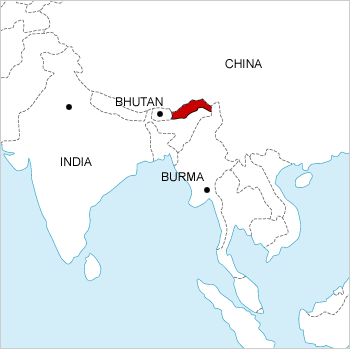
Arunachal Pradesh
Arunachal Pradesh (which means ‘land of dawn-lit mountains’) is a scenic region located in the north-eastern corner of India. But with a border with Tibet in the north and Burma in the east, it has in recent months become a growing source of tension between the region’s two rising powers.
The dispute between India and China over the state’s legal status goes back to the creation of the so-called McMahon Line, which was drawn up as a border between the two countries by the British Administrator, Sir Henry McMahon, around 1913-1914, during the Simla Conference.
The Chinese government rejected the legitimacy of the McMahon Line in 1947 and, in August 1959, Chinese troops crossed the McMahon Line into Arunachal Pradesh. They withdrew from the state in 1961. But in 1962, China opened military fronts in Ladakh, while its troops also crossed over the McMahon Line, resulting in the Sino-Indian war.
China’s historical explanation for its border disputes with neighbours has generally been based on its claim that its territories were taken away by stronger neighbouring governments or imperialist occupiers at a time when its own government was either extremely weak or too subservient to dissent.
But it’s ironic that China’s dispute came in this case with Indian Prime Minister Jawaharlal Nehru–a good friend of China who championed resolving all disputes through peaceful means. China’s military takeover of Tibet in 1950 and India’s decision to grant asylum to the Dalai Lama in 1959, meanwhile, further complicated the situation.
After the 1962 Sino-Indian war, the border dispute between the two could not be resolved because China wanted either acceptance of the status quo (i.e. acceptance of the current control of territories by both sides as official borders), or a swap of territories. However, having been defeated by China in the 1962 war, and with no inclination to swap disputed territories with its neighbours, India would not agree to either proposal–giving up parts of its claimed territory would have caused considerable internal acrimony and unrest and been met with charges of appeasement.
The Dalai Lama’s continued asylum in India has also remained a sore point between the two countries, especially since he came to global prominence after winning the Nobel Peace prize in 1989.
Rightly or wrongly, the Chinese perspective has been that India and Western nations were using the Dalai Lama and the Tibetan issue to put pressure on Beijing. Needless to say, given that country’s bitter memories of humiliation at the hands of foreigners, national sovereignty remains an issue on which China’s rulers have demonstrated no interest in negotiating. India has said that granting the Dalai Lama asylum was a humanitarian gesture rather than an attempt to humiliate China, an explanation China has never really accepted.
As a consequence, the chances of resolving the legal status of Arunachal Pradesh are slim-to-none. As recently as October 2009, the war of words between the two countries escalated, with China unsuccessfully attempting to block a $2.9 billion developmental loan by the Asian Development Bank to Arunachal Pradesh on the grounds that it’s an internationally disputed territory. In retaliation, India objected to China’s developmental loans to the Pakistan-administered Kashmir on similar grounds.
Considering the enormous stakes the two share over cooperation in a variety of fields such as energy, software development and various consumer-related projects, the two would be well advised to set aside the border dispute and focus on fields where they see eye-to-eye.
Ehsan Ahrari is Professor of Security Studies at the Asia-Pacific Center for Security Studies (APCSS). The views expressed are his own.











